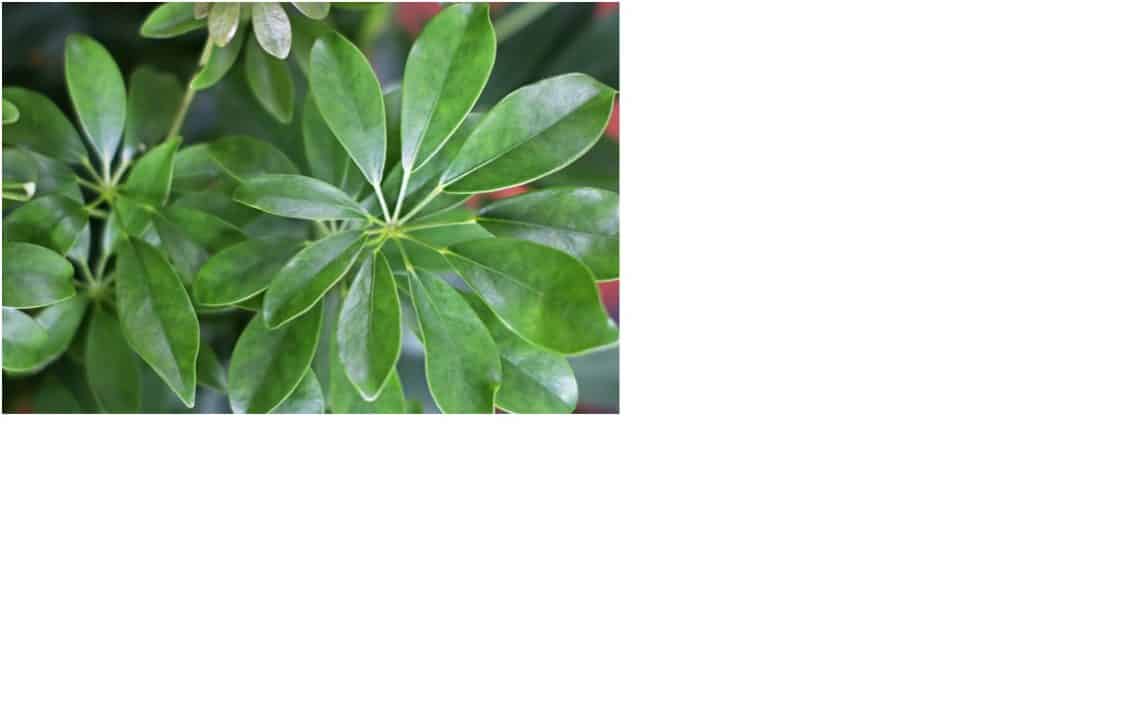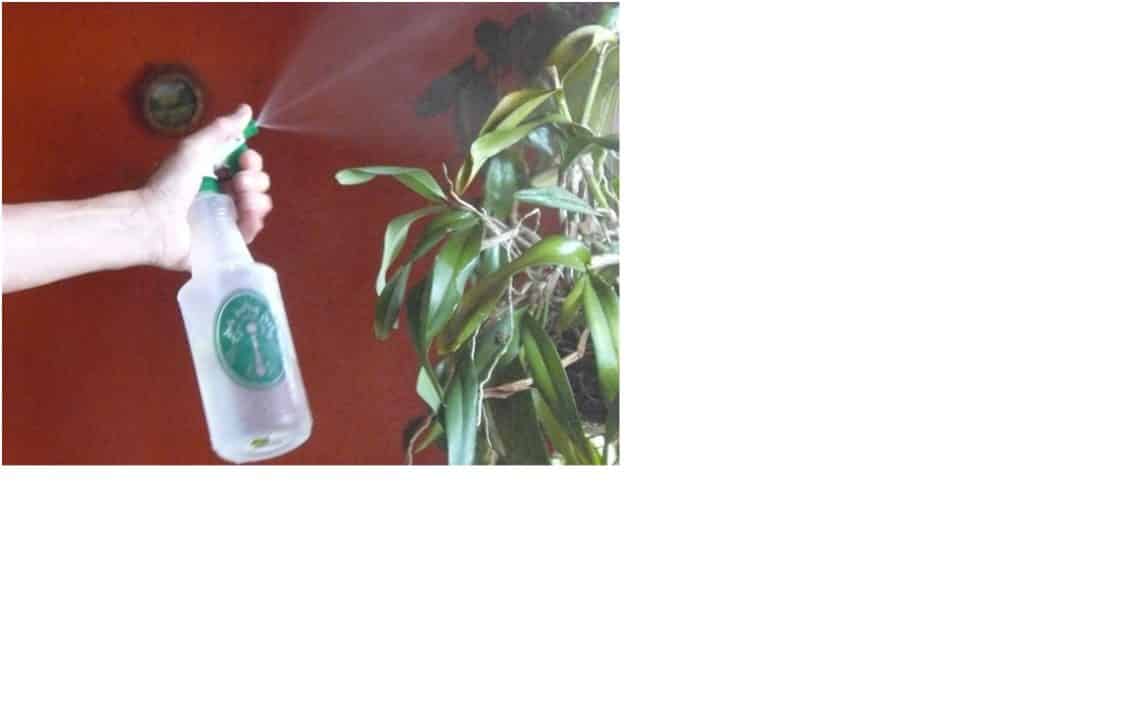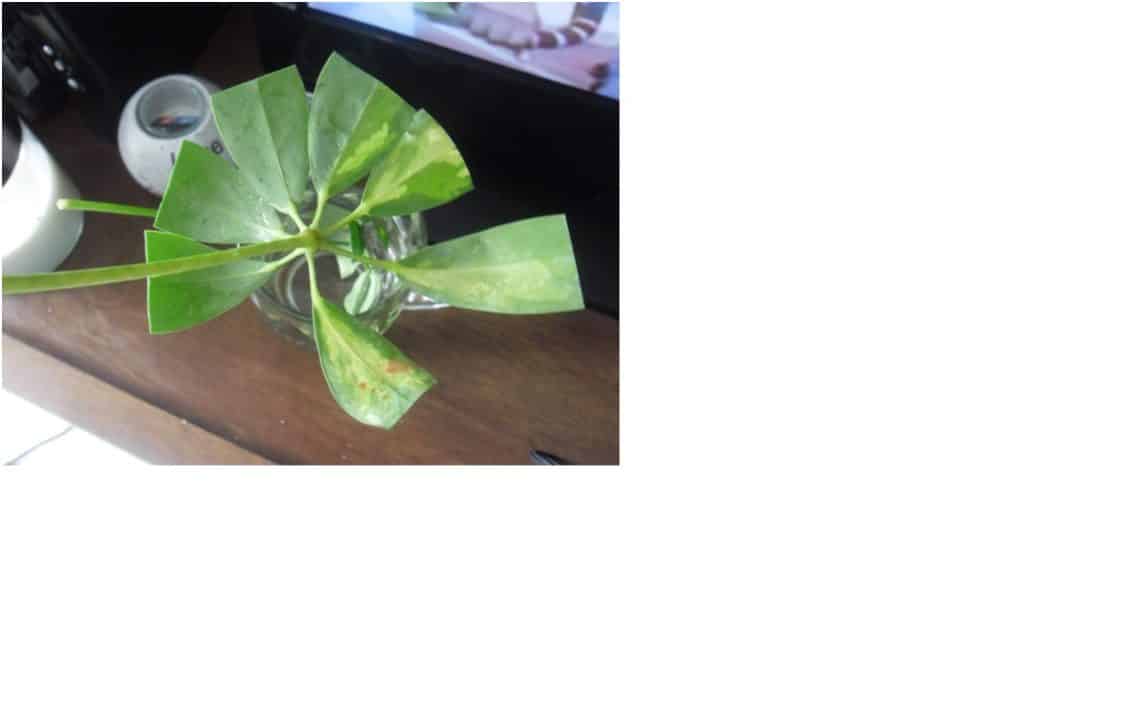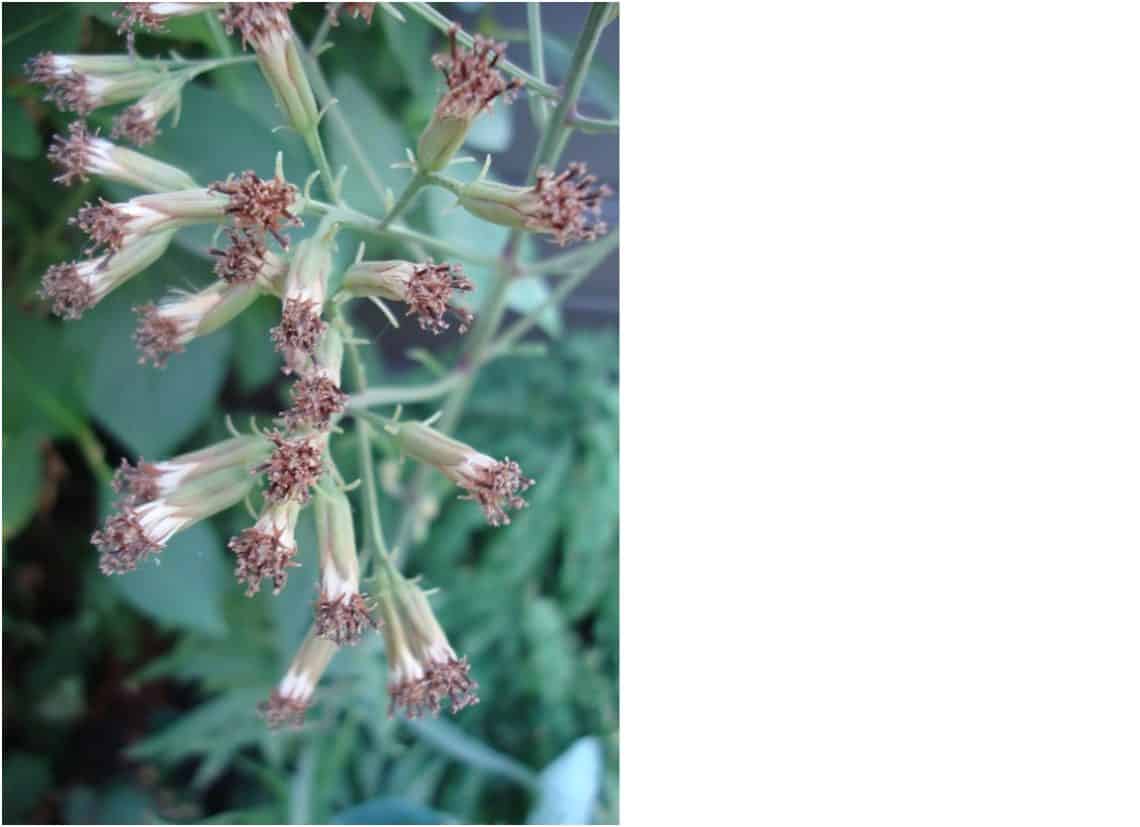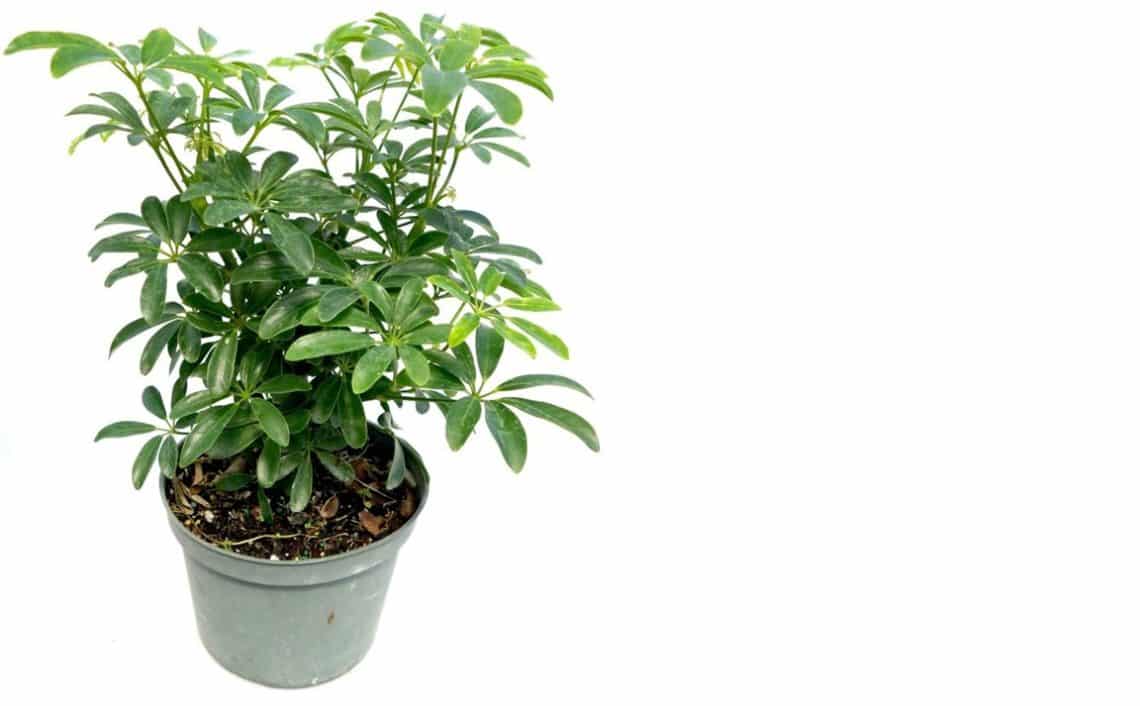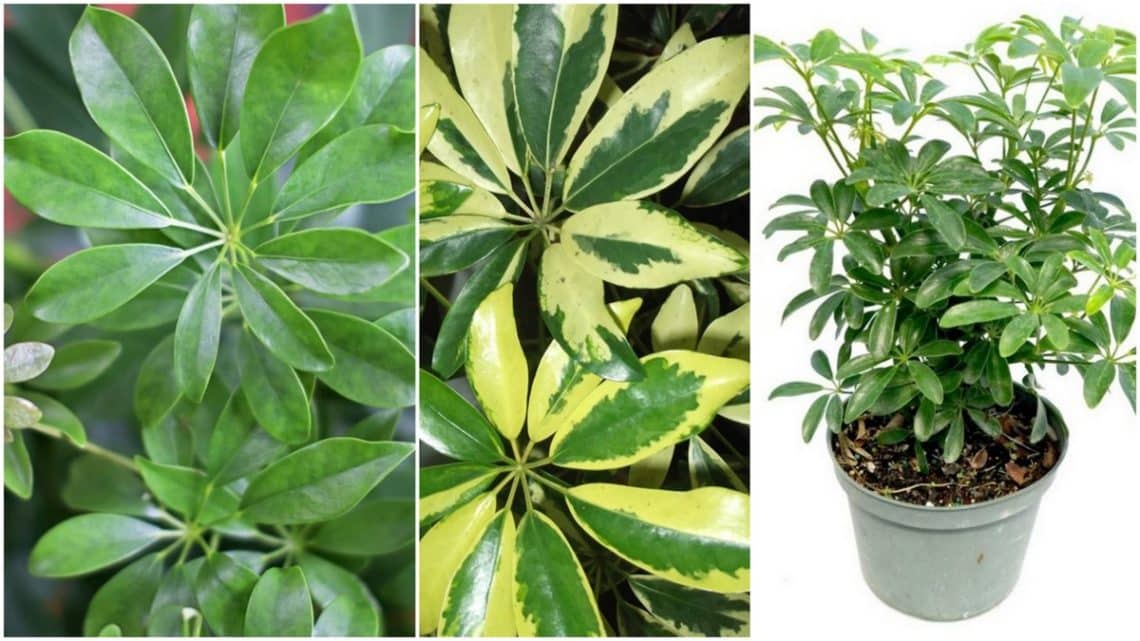An adorable pet for your floral collection, and an amateur gardener’s most obedient subject, the umbrella tree is the houseplant you didn’t know you wanted, but a houseplant you deserve to take care of.
Taking its name from the charming shape of its foliage, the umbrella plant gains its affection because of being very adaptable to growing in different types of conditions, and it takes neglect sportively.
Dwarf Umbrella Tree 101
What’s In A Name?
Scientifically known as Schefflera arboricola, it’s more commonly called an umbrella tree, with a dwarf suffix attached to it for one variety. It also bears the names octopus tree and parasol plant, so next time you hear any of these names know it is your friendly neighborhood houseplant.
However, there are some common confusions regarding the umbrella plant. It is mistaken for Heptapleurum, which is botanically very similar to Schefflera, and has an uncanny resemblance to the Umbrella plant. If you are one of those who have confused one for the other, there is a reason for relief. This swapping of plants does not hinder how you take care of them, as the difference isn’t that big at all. But, another common misconception is with the cyperus plant, which in itself is a type of umbrella plant, but still considerably different.
Dwarf Umbrella Tree-Land of Origin
Its place of origin is not one, but two. Australia and Taiwan. Tolerating temperatures of 60 to 70°F best, the scale of tolerance starts from 15°F. It does require medium light water and direct sun, but not harsh or it will burn, more on that below.
It can grow up to the height of 50 feet and thrive in medium-high humidity, while the dwarf variety reaches only a meager 4 or 5 feet. When trimmed and pruned well, the growth can be managed indoors. It doesn’t bother its owner on the soil side either, with the standard compost or potting soil being more than enough, and fertilizer once a few weeks or so keeps it healthy.
It does have a few downsides, one of them chiefly being propagation. One will need to sunder the tips while they are growing, in spring. Pests need to be tackled too, especially red spider mites and scale insects.
Varieties
This adorable plant gets its name from the look of its leaves, often in a group of five to nine, shiny and long and oval and its tips pointed, hoisted in a circular fashion above stems that are delicate on touch. These leaves, due to the rapid growth of the plant, can double in number as it grows. But, the more, the merrier, and prettier.
It has two varieties for its color, one is green with a dark and lush hue, and the other is a variegated pigmentation with creamy white or yellow tinges. A bonsai darling, the umbrella plant is often grown in its variegated skin by aficionados. Apart from the look of its leaves, there is a more detailed difference between the two varieties as those with green leaves – even though not as appealing to the eye as a variegated type – are more robust in their make as they can survive with lesser light and in far colder temperatures. Variegated varieties are more delicate and don’t grow as tall as green ones.

Schefflera actinophylla, which is native to Australia and Java, has more varieties of green than variegated, more often than not having slightly variegated pigmentation. The Schefflera Arboricola found natively in Taiwan is the most commonly variegated one. Even though both plants are quite common to purchase, and have special specimens like the Compacta and the Gold Capella, it is the variegated ones that are more in demand.

Blooming
Apart from the leaves, the umbrella plant does sprout flowers, and needless to mention, berries too. With the appearance of long spikes with a red hue, the flowers bloom during the summer season and make way for round berries that are dandelion, rouge, and black in color, the gradient changing as they age, eventually turning black. In spite of being a flowering plant, it does not bloom indoors often.
Some Health Concerns
Toxicity is a concern every plant owner must explore thoroughly before purchasing or growing any plant. And in this segment, the Umbrella Tree is not without its toxicity, and its effects vary. For most people, there is no reaction, but others suffer from irritated skin and a terribly itchy rash due to the sap. The skin irritation isn’t persistent in most cases and goes away in a short while.
Touching and ingestion are widely different and the latter – be it a leaf, a flower or a berry, can be a cause for your body going numb, your mouth tingling, disorientation and poor coordination, and yes, vomiting. But, this is only serious in some cases when the allergy has caused an extreme reaction. It is recommended to consult a physician when doubtful.
If you like petting more than just trees, please do keep your cats and dogs away from the plant. It is mildly toxic to your pets and is best kept beyond their reach for their safety.
Beware The Mite-y Pests
Speaking of safety, be it your bed, pet, or pot, pests are always a blot on your happiness, and they do have a bone to pick with the umbrella plant from time to time. Spider mites are the number one foe for your dwarf plant. You can curb this minor infestation by spotting the webbing on the leaves’ undersides and clearing them out. You can drive these pests away with the one thing your tree loves: a high level of humidity. The mites cannot stand it and mist the plant regularly is the best to keep the spiders away.

Let There Be Light
While you chase the pests away, please do remember to keep the plant in the general direction of the light, preferably indirect yet bright, a short distance from any window. It isn’t advisable to expose them to the direct heat of the sun, as the leaves begin to burn. Direct sunlight is still allowed, but only for a couple of hours a day and preferably not at noontime.
Conversely, a lack of adequate light will result in the yellowing of the leaves along with discernible drooping. This requirement is of further importance when growing a variegated tree as the need for light is higher for this than the normal one. In spite of this, a darker corner of your house is not entirely a wrong decision. It will merely hinder the width of the plant and space it out less densely.
Watering
Unlike its light requirement, the umbrella tree isn’t fussy about its water intake. It has a high tolerance for drought and can thrive through neglectful watering. This does not mean the tree can live through an adverse lack of water, and it will begin to wilt, the leaves wrinkling when not supplied with adequate water.
Excessive watering can be a grave issue, starting with the leaves turning black and falling off. The stems and roots rot at an exponential pace. The water you use for the plant should be of lukewarm temperature, and the plant should only be irrigated when the leaves start wilting, or the soil is nearly dry. Once watered, do not let the water clog the pot, and drain it properly so that the soil isn’t wet for long.

Trees are living things and they too have preferences for special treatment like us, or our pets. The umbrella plant enjoys abundant humidity and fancying it with misting every couple of days with warm water is recommended. Using distilled or filtered water helps avoid deposits when you mist the leaves.
A Home Called Soil
Now that you know what the plant needs like food and water and how much it actually needs, let’s move on to the place it calls home: the pot, and specifically the soil. It does not require any special type, and a common potting soil is enough, the condition being the soil having good drainage and moisture retaining the property. You can aerate the soil better by adding coarse sand or perlite. Or you can make your own perfect mixture by adding one part moist peat or humus, one part garden soil, a pinch of lime, and one part of the above-mentioned coarse sand or perlite.
Adding fertilizer to this mix comes with its own list of instructions. A special foliage fertilizer or a liquid houseplant one is best to use, and the amount you add depends on the season it is growing in and the light the plant is receiving.
While in winter, there is no requirement for fertilizing, from February on until October fertilizing the plant twice or four times per month with a diluted solution should be enough. Increase the frequency a little if the roots of the plant are bound to the pot.
Speaking of pots, your little tree requires changing homes every couple of years. It is important not to fertilize the soil after repotting as there is already a sufficient amount of fertilizer in the new soil. Repotting your dwarf tree is essential, and opting for a heavier base for the pot will keep your plant from toppling.
Grooming Tips
Do you know what else will keep your plant from toppling? Pruning it well. The umbrella tree grows rapidly and if you don’t want it to go through a wild teenage phase ever so often, pinch the tips off so that it doesn’t tower out of control and becomes bushier instead. And yes, keep an extra watch on its growth, it tends to spring up in springtime.
Birthing And Nurturing
Puberty, sadly, does not bode well for this plant. Propagating the umbrella plant is tough, but the ways to do it are common: through air layering, seeds, and cuttings. The method for growing them via cuttings is quite simple. Near the base, clip a stem off and use a dampened paper towel to wrap the end that has been cut.
To reduce the moisture-losing process of the plant during the rooting, horizontally cut the leaf in half using a sharp knife. To grow the plantlings, root them in the cradle of a pot of six inches filled with fresh potting soil. Plant them by poking holes of two inches with a pen or a pencil or an instrument of the same measure.
The cuttings should be in a place where the humidity is high and are exposed to ample indirect sunlight. To add more humidity, mist the pot every couple of days after covering it with plastic.

If you plan to raise the trees up from seeds, you’ll have to wait through a small incubation period as germination takes two to three weeks from the date of sowing. The sowing is hassle-free and can be done in small containers with a light soil cover, but the gathering of seeds requires a little more effort on your part. When the flowers start turning from red to a dark shade of maroon, dry them out in the sun and treat the pods with a gentle wash so that when you rub the seed pod carefully, the seeds fall out. Gather them and dry them once more before planting them in the soil.

If this seems like a little delicate process, your final option is air layering, and this is quite an interesting one. Once you have sliced a thin layer from the lower branch stem carefully, bury the open area under the soil and wait for the roots to develop. Once the roots sprout, transfer the steam into a different pot, and voila! You have one more umbrella plant in your garden.
Conclusion
From its birth to maintenance, the Umbrella Plant is not one to make you fussy. It’s an eye-catching addition to your garden. It isn’t too expensive on the purchase side either, with an average-sized pot costing you between $20 and $26 approximately.
So, keep your pets away and mist the pests away, don’t eat the leaves or the berries, water it regularly, and don’t let it reach too close to the sun, and done, you have an excellent young one to nurture.
Related Articles
9 Best Garden Tower Planters for Enthusiasts
22 Plants That Repel Bugs, Flies & Other Insects



